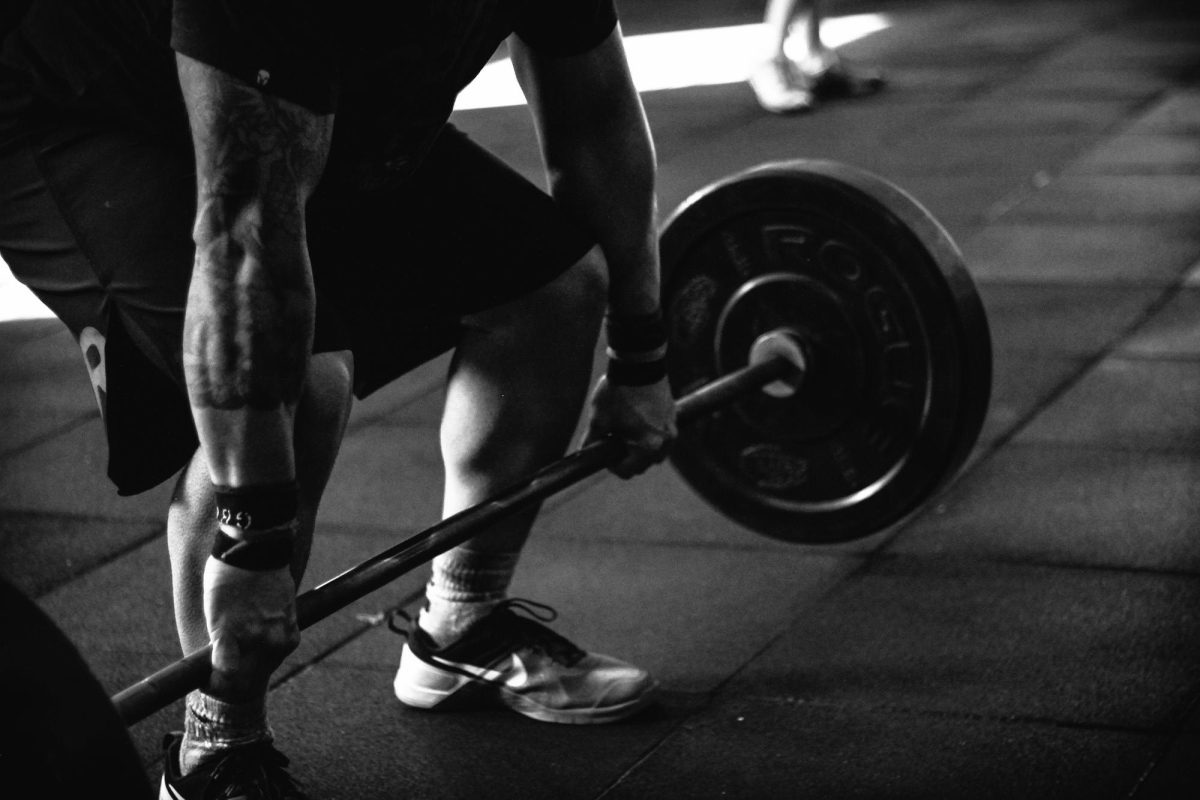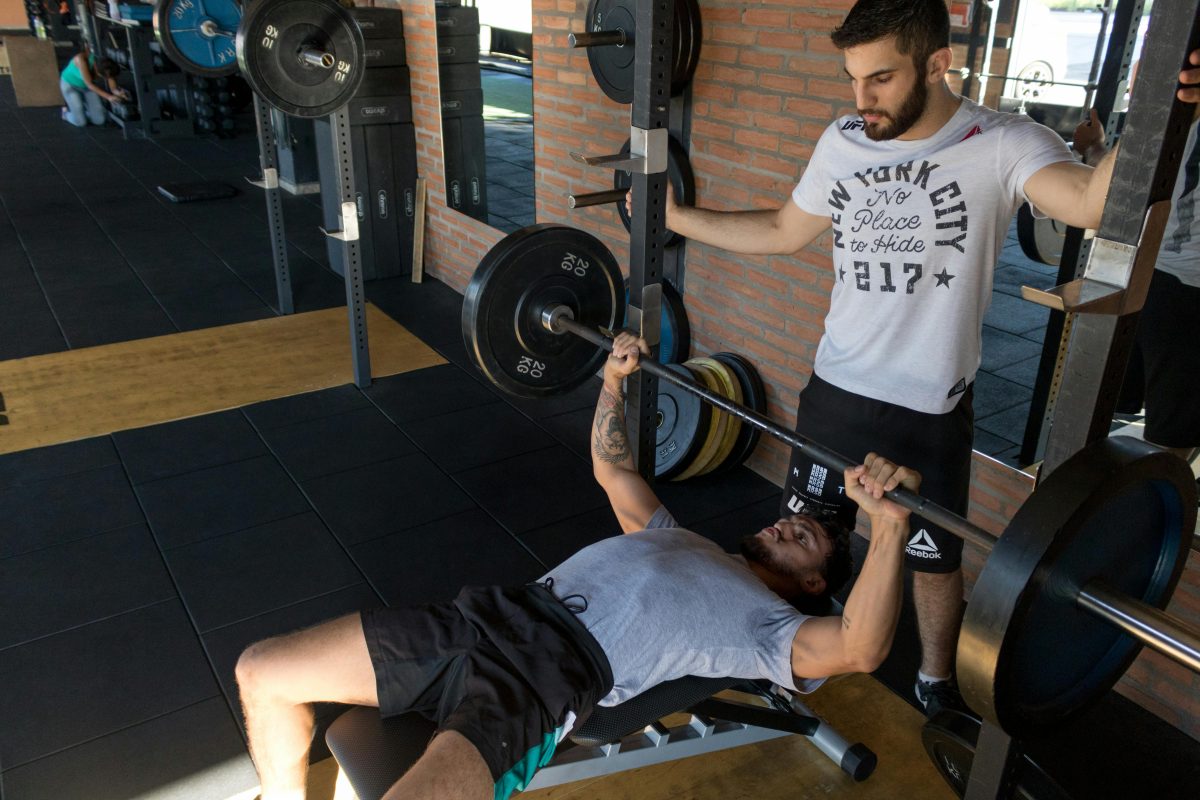Last Updated on: 14th July 2024, 10:56 am
Introduction to Plateaus in Weight Training

At the heart of every weight training journey lies the inevitable plateau. A plateau occurs when progress stalls, despite consistent effort in your workouts. It’s like hitting an invisible wall. You’re putting in the work, but the results just don’t show. Recognizing the signs is the first step to overcoming them. These signs include:
- Lack of strength gains
- No improvement in muscle mass
- A general feeling of stagnation
Why is pushing past these plateaus so crucial? Because overcoming them is synonymous with progress. Each plateau conquered marks a new level of personal achievement and physical development. It’s a test of both your mental and physical fortitude, challenging you to adapt, overcome, and emerge stronger. The journey through and beyond plateaus is what sculpts not just your body, but your character, teaching resilience, patience, and the art of strategic adaptation.
Reassessing Your Training Routine

The Importance of Variety in Exercises
Variety isn’t just the spice of life; it’s the core of breaking through weight training plateaus. Introducing different exercises into your routine prevents your body from adapting too well to the same movements. This means muscles are continually challenged, fostering growth and strength gains. Think of it as keeping your muscles guessing, leading to sustained progress and interest in your workouts.
Adjusting Volume and Intensity
Adjustment is key. Sometimes, more isn’t better; it’s just more. Other times, it’s not enough. Striking the right balance between the volume (how much) and intensity (how hard) of your workouts can reignite progress. Reducing volume while increasing intensity, or vice versa, can stimulate your muscles in new ways, pushing past stubborn plateaus.
Incorporating Periodization for Sustained Progress
Periodization is your long-term plan. It systematically varies your training focus, intensity, and volume over weeks or months. This approach ensures consistent progress by preventing overtraining and allowing adequate recovery. It’s like crafting a masterpiece; each stroke is deliberate, contributing to the bigger picture of your fitness journey. By incorporating periodization, you’re not just working out; you’re sculpting your body with precision and strategy.
Overcoming a plateau in weight training isn’t just about working harder; it’s about working smarter. By reassessing and adjusting your training routine with variety, volume, intensity, and periodization, you set the stage for breakthroughs and sustained progress. Remember, every plateau overcome is a step closer to your ultimate fitness goals.
Nutrition and Recovery: Fueling for Peak Performance

Evaluating Your Diet for Optimal Performance and Recovery
Optimizing your diet is crucial for breaking through plateaus. A balanced intake of nutrients fuels your workouts and aids in recovery, setting the foundation for growth. It’s about more than just calories; it’s about the quality and timing of those calories. Incorporating a variety of whole foods ensures you’re getting a broad spectrum of vitamins, minerals, and antioxidants that support muscle repair and energy production.
The Role of Protein and Other Key Nutrients in Muscle Growth
Protein is the cornerstone of muscle repair and growth. However, it doesn’t act alone. Carbohydrates replenish glycogen stores, while fats provide essential fatty acids. Micronutrients like iron, calcium, and B-vitamins play pivotal roles in energy metabolism and muscle function. Aiming for a diet rich in:
- Lean proteins
- Whole grains
- Healthy fats
- Colorful fruits and vegetables
ensures your body has all it needs to thrive.
The Importance of Sleep and Rest Days in Overcoming Plateaus
Sleep and rest are not signs of weakness but essential components of strength building. They allow your body to repair, rebuild, and strengthen. During sleep, growth hormone levels peak, facilitating muscle growth and fat loss. Rest days prevent overtraining, reducing the risk of injury and burnout. Embrace them as part of your strategy to overcome plateaus and achieve lasting progress.
Overcoming a plateau requires a multifaceted approach. By reassessing your training routine and optimizing your diet, sleep, and recovery practices, you create a powerful synergy that propels you forward. Remember, progress is not linear. It’s a journey of peaks, valleys, and plateaus. Each phase offers valuable lessons that, when embraced, lead to greater strength, endurance, and resilience. Fuel wisely, rest adequately, and train intelligently to unlock your full potential.
Advanced Training Techniques to Break Through Plateaus

Introduction to Drop Sets, Supersets, and Pyramid Training
When progress stalls, it’s time to shake things up. Drop sets, supersets, and pyramid training are techniques designed to intensify your workouts, pushing you past those stubborn plateaus. Drop sets involve performing an exercise until failure, then reducing the weight and continuing to work to failure again. Supersets pair two exercises back-to-back with no rest in between, targeting either the same muscle group for intensity or opposing ones for balance. Pyramid training increases or decreases the weight with each set, adjusting the number of repetitions inversely, to challenge muscles at varying levels of fatigue.
Implementing These Techniques Safely
While these methods can turbocharge your training, safety is paramount. Start by incorporating one new technique at a time, allowing your body to adapt. Ensure you’re using proper form, especially as fatigue sets in, to prevent injury. Listen to your body; if a technique feels wrong, modify or skip it. Rest and recovery are more crucial than ever when you’re pushing your limits.
The Benefits of Each Technique
Each of these advanced techniques offers unique benefits. Drop sets push muscles beyond the usual point of fatigue, encouraging hypertrophy. Supersets increase workout efficiency and can enhance muscular endurance and strength by keeping muscles under tension longer. Pyramid training allows for both high-intensity and high-volume work in the same session, promoting strength gains and muscle growth. By strategically implementing these techniques, you can breathe new life into your routine, overcome plateaus, and achieve greater gains.
Overcoming a plateau requires a multifaceted approach. By reassessing your training routine and optimizing your diet, sleep, and recovery practices, you create a powerful synergy that propels you forward. Remember, progress is not linear. It’s a journey of peaks, valleys, and plateaus. Each phase offers valuable lessons that, when embraced, lead to greater strength, endurance, and resilience. Fuel wisely, rest adequately, and train intelligently to unlock your full potential.
The Role of Mindset and Motivation

The Psychological Aspects of Hitting a Plateau
Encountering a plateau can feel like a mental battle. It’s a test of endurance, where the mind often gives up before the body does. Understanding that plateaus are a natural part of the growth process is crucial. They’re not a sign of failure but an indication that it’s time to reassess and adjust your approach.
Strategies for Staying Motivated and Focused
Maintaining motivation is key to overcoming any plateau. Setting small, achievable goals keeps the journey exciting and rewarding. Visualizing success can also create a powerful mental image that propels you forward. Surrounding yourself with a supportive community, whether online or in person, provides encouragement and accountability, making the journey less daunting.
Setting Realistic Goals and Tracking Progress
Realistic goals are the foundation of sustained progress. They should challenge you, yet be attainable with effort and dedication. Tracking progress, whether through a journal, app, or photos, offers tangible evidence of your achievements. Celebrating these milestones, no matter how small, fuels your motivation and commitment to your goals.
Overcoming a plateau is as much a mental challenge as it is physical. By adopting a positive mindset, staying motivated, and setting realistic goals, you can push past these temporary obstacles. Remember, every plateau overcome is a step closer to your ultimate fitness goals. Embrace the journey, learn from each phase, and let your achievements, no matter how small, propel you forward.
When to Seek Professional Help

Identifying the Need for a Personal Trainer or Coach
- Stagnation in Weight Training: If your progress has halted, it’s a sign to consider professional help.
- Struggling with Form: A coach can correct your technique, preventing injuries.
- Complex Program Design: Feeling overwhelmed? A trainer can simplify and personalize your plan.
- Lack of Results: Not seeing the desired changes? A tailored approach might be needed.
The Benefits of Personalized Training Plans
- Customized Workouts: Plans that fit your lifestyle, abilities, and goals.
- Expert Insight: Benefit from professional knowledge to challenge and progress.
- Reduced Injury Risk: Safe workouts that match your fitness level.
- Engagement and Progress: Stay motivated with a plan that evolves with you.
Other Resources: Physical Therapists, Nutritionists
- Physical Therapists: Recover and strengthen with expert guidance.
- Nutritionists: Optimize your diet for performance and recovery.
Seeking professional help is not a sign of defeat; it’s a strategic move towards breaking through plateaus and achieving your fitness aspirations. With the right support, you can unlock new levels of strength and endurance, ensuring every workout counts.
In Closing
Plateaus are stepping stones, not stop signs. They challenge us to evolve our approach to training and recovery. By embracing variety, nutrition, rest, and advanced techniques, we transform obstacles into opportunities for growth. This journey, enriched by strategic adjustments and professional guidance, leads to unparalleled strength and resilience. Let every plateau conquered remind you of your potential for greatness, urging you forward in your quest for peak performance.
How to Overcome the Plateau in Weight Training FAQs
Mental focus can help overcome a plateau in weight training by improving your mind-muscle connection and workout intensity. Being mentally present during your workouts ensures you are performing each exercise with proper form and maximum effort. This focused approach can lead to more effective workouts, pushing past previous limitations and encouraging muscle growth.
Yes, rest days can help overcome a plateau in weight training by allowing your muscles time to recover and grow stronger. Overtraining can lead to fatigue and decreased performance, which may contribute to a plateau. Incorporating adequate rest and recovery days ensures your muscles have time to repair and adapt, making them stronger for your next workout.
Sleep significantly affects your ability to overcome a plateau in weight training because it’s when most recovery and muscle growth occurs. Lack of sleep can hinder performance, recovery, and the body’s ability to adapt to exercise stress. Ensuring you get enough quality sleep supports hormonal balance, recovery, and overall fitness progress.
Overcoming a plateau in weight training typically involves altering your exercise routine or increasing the intensity of your workouts. This can mean incorporating new exercises, adjusting the number of repetitions and sets, or increasing the weight lifted. Consistently challenging your muscles in new ways encourages continued growth and improvement.
Tracking your workouts can help overcome a plateau by identifying patterns, progress, and areas needing improvement. This record-keeping allows you to see when and how your progress stalls, making it easier to adjust your routine effectively. Additionally, tracking can keep you motivated and accountable, ensuring consistent effort towards your goals.
To avoid a plateau, it’s recommended to change your workout routine every 4 to 6 weeks. This doesn’t necessarily mean a complete overhaul each time; even small adjustments, such as changing the order of exercises, can be effective. Regularly introducing new stimuli to your workouts keeps your muscles guessing and growing.
Increasing weight is not the only way to overcome a plateau in weight training; changing your workout’s volume, intensity, and frequency can also be effective. Incorporating techniques like drop sets, supersets, or high-intensity interval training (HIIT) can provide new challenges to your muscles. Additionally, focusing on other aspects of fitness, such as flexibility and endurance, can contribute to overall strength gains and help break through plateaus.
A plateau in weight training is often caused by the body adapting to the current workout routine. When exercises become too familiar, the muscles don’t have to work as hard to complete them, leading to a decrease in strength and muscle gains. Changing up your routine or increasing the intensity can help overcome this adaptation.
Hydration plays a significant role in overcoming a plateau in weight training because it affects muscle function and recovery. Dehydration can lead to decreased strength, endurance, and recovery rate, all of which can contribute to a plateau. Ensuring you are adequately hydrated helps maintain optimal performance and recovery, aiding in continuous progress.
Nutrition plays a crucial role in overcoming a plateau in weight training because it provides the necessary fuel and building blocks for muscle growth and recovery. Without adequate protein, carbohydrates, and fats, your body may not have enough energy or resources to perform at its best and adapt to new challenges. Ensuring your diet meets your nutritional needs can help break through plateaus and support continued progress.
Orlando is a all round athlete from Australia, now resident in Germany. His sports of passion of American Football(Offensive line), weight training and indoor rock climbing where he uses his 195cm wing span to his advantage.



